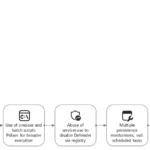Click here to buy secure, speedy, and reliable Web hosting, Cloud hosting, Agency hosting, VPS hosting, Website builder, Business email, Reach email marketing at 20% discount from our Gold Partner Hostinger You can also read 12 Top Reasons to Choose Hostinger’s Best Web Hosting
Every month, Windows updates promise to smooth out wrinkles in our PCs—yet the Windows 11 July 2025 Update Issues emerged after installing the July 8, 2025 cumulative update (KB5062553), and many of us were greeted not by resolved bugs but by a fresh layer of confusion. Instead of fixing an Event Viewer–flagged firewall error, Microsoft’s release notes claimed it was “fully” addressed—only to quietly admit the claim was false days later. For busy IT teams and everyday users alike, this mix‑up meant chasing phantom fixes amid production deadlines, renewed support tickets, and strained trust. In this post, I’ll break down what went wrong, why you can safely ignore the error, and how to prepare for the next true patch.
The core purpose of the Surface Copilot PC is to provide an elevated computing experience that blends performance, security, and intelligent features.
What Happened with KB5062553?
The False Fix
In June 2025, some Windows 11 24H2 devices began logging Event ID 2042 errors under Windows Firewall With Advanced Security, reporting "Config Read Failed" and "More data is available." This harmless glitch simply indicated the firewall service received more data than its first read could handle, then quietly re‑read and continued working without disruption. Yet, when Microsoft shipped KB5062553 on July 8, 2025, its release notes stated it “addresses an issue found in Event Viewer as Event 2042,” implying the bug was eliminated—when in fact, the error proliferated to all updated systems, not just those previously affected.
Microsoft Rolls Out Windows 11 Build 27898 with Self‑Healing Recovery and Battery‑Saving Upgrades
Microsoft’s Apology
By July 16, Microsoft had quietly updated its documentation to retract the “Resolved” status, conceding the fix was mistakenly marked complete. The company apologized and pledged that “a resolution for this issue is planned to be included in an update to be released in the coming weeks. We apologize for any inconvenience or confusion.” This reversal left admins wondering how such a public-facing error could slip through quality checks—and what else might have been overlooked.

Why This Matters: The Real‑World Impact
Support Overhead: Help desks reported surges in tickets from users alarmed by “critical” firewall errors in Event Viewer—even though the firewall was unaffected.
Misplaced Trust: When release notes promise a fix, many organizations push updates automatically. Mistakes like this can erode confidence in Microsoft’s patch management process.
Operational Distraction: System administrators spent hours researching whether the firewall service had indeed failed, delaying other urgent tasks.
Microsoft Teams Add Agents and Bots in Current Conversations for Seamless AI Integration
Mitigation Strategies for IT Teams
Communicate Proactively
Send out an advisory: Explain that Event ID 2042 is harmless and being addressed in an upcoming cumulative update.
Link to official Microsoft documentation and community resources so users can see the apology and timeline.
Filter Known Errors
Use your log‑management tool (e.g., Splunk, SCOM) to suppress Event ID 2042 alerts from Windows Firewall temporarily—so genuine warnings aren’t drowned out.
Stagger Deployment
Hold off on broad KB5062553 rollouts until Microsoft confirms a reliable fix.
Test updates in a controlled environment before production to spot release‑note discrepancies.
Monitor for the Real Fix
Watch for the next out‑of‑band update (likely in late July or early August 2025).
Subscribe to the Windows release health dashboard to get real‑time notifications.
A New Perspective: What This Foreshadows
This mishap reveals a broader theme: as Windows evolves—especially with AI integration and tighter security rules in 24H2—Microsoft’s quality‑assurance process must scale accordingly. With new features under test, even harmless bugs can sneak into broad releases. For the first time, we’re seeing that communication protocols (release notes, documentation updates) are as critical as code quality. Organizations should treat release notes themselves as “code” to be audited against actual behavior.
Is Windows 11 Better Than Windows 10? Here’s What You Need to Know
Looking ahead, I expect:
Enhanced Pre‑Release Checks: Microsoft may introduce more rigorous cross‑team sign‑offs before marking issues as “Resolved.”
Improved Transparency: Real‑time release health dashboards could expand to include Issue‑status diff logs, showing when a fix state changes.
Community‑Driven QA: Early‑access builds might open up to a broader pool of IT pros to catch docs‑versus‑binary mismatches before public rollout.
Key Takeaways
False Resolution: KB5062553’s release notes claimed to fix Event ID 2042 firewall errors, but actually introduced them to all systems.
Official Apology: Microsoft retracted the “Resolved” status on July 16 and promised a true fix in an upcoming cumulative update.
Harmless Bug: The firewall service itself remains unaffected; Event Viewer errors can be safely ignored while awaiting the patch.
Action Plan: Suppress false alerts, delay mass deployment, and monitor Microsoft’s release health channels.
Broader Lesson: Release‑note accuracy is now a vital part of patch management—treat documentation like code during QA.
Skype Shuts Down by Microsoft and 5 Best Communication Alternatives
FAQs
Q1: What exactly triggers the Event 2042 firewall error?
It occurs when Windows Firewall’s configuration data exceeds an initial buffer read; the service re‑reads successfully, so it’s purely cosmetic.
Q2: Can I uninstall KB5062553 to remove the error?
You can, but you’ll lose other security fixes in that patch. Instead, filter out the warning or wait for the next cumulative update.
Q3: How will I know when Microsoft releases the real fix?
Watch the Windows release health dashboard, follow Microsoft’s official Windows 11 blog, or enable notifications in your Windows Admin Center.
Q4: Are there any other issues in the July 2025 Update?
Some users have reported installation hiccups; we’ll cover those in an upcoming post once Microsoft confirms their scope.
Conclusion
KB5062553 taught us that even the best‑intentioned fixes can backfire when documentation and binaries fall out of sync. While Microsoft works on the true resolution, savvy IT teams can shield users from needless alarms, reinforce trust with clear communication, and refine deployment workflows. Stay tuned for the forthcoming cumulative update—once it’s live, you’ll be ready to install with confidence.
For more in‑depth Windows troubleshooting guides and update‑management tips.
Now loading...






